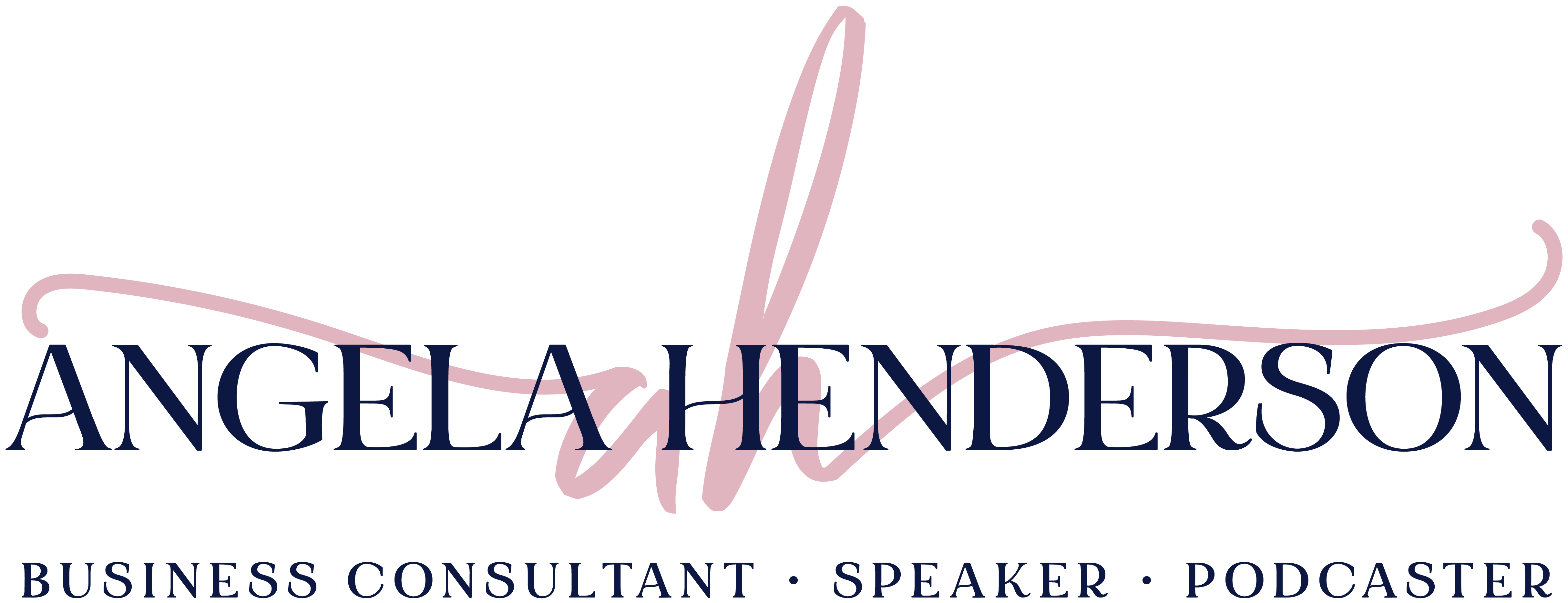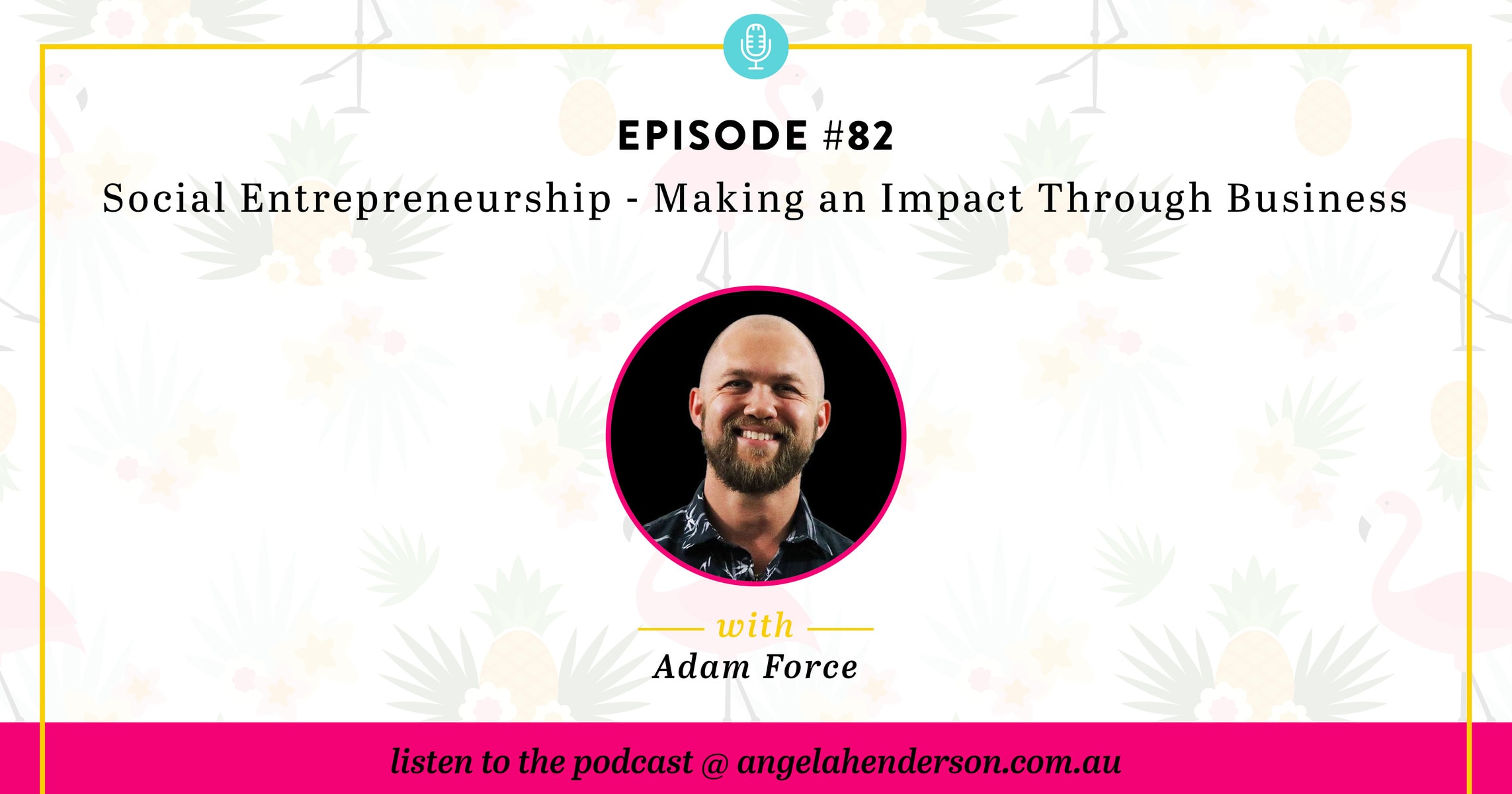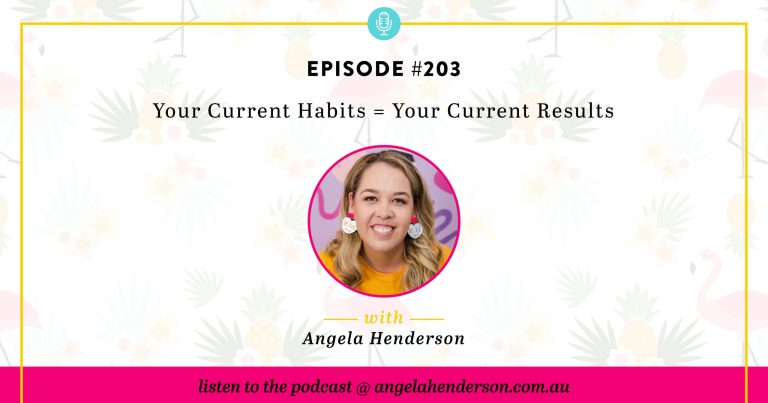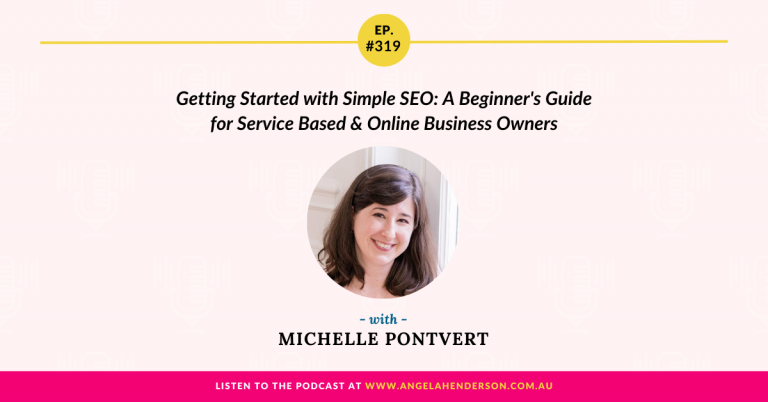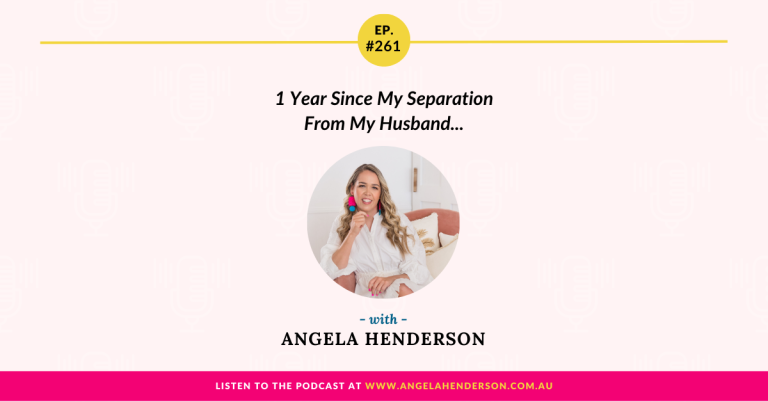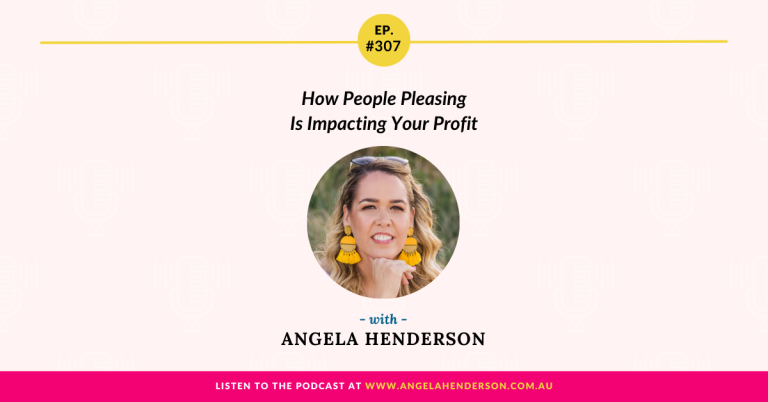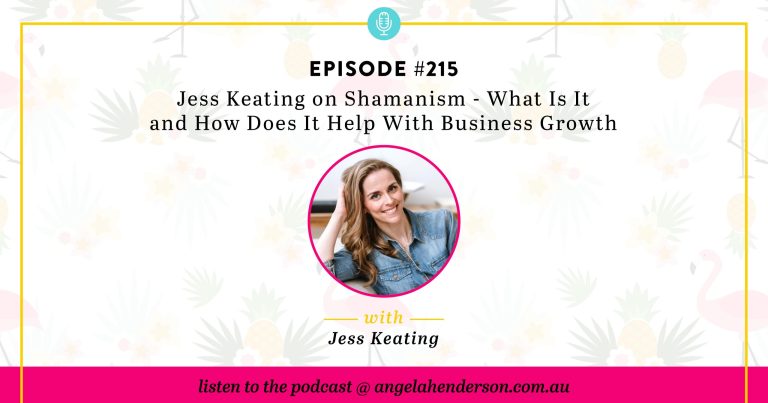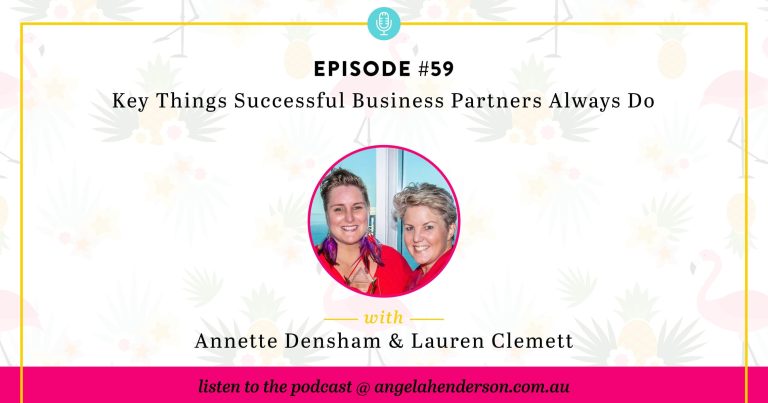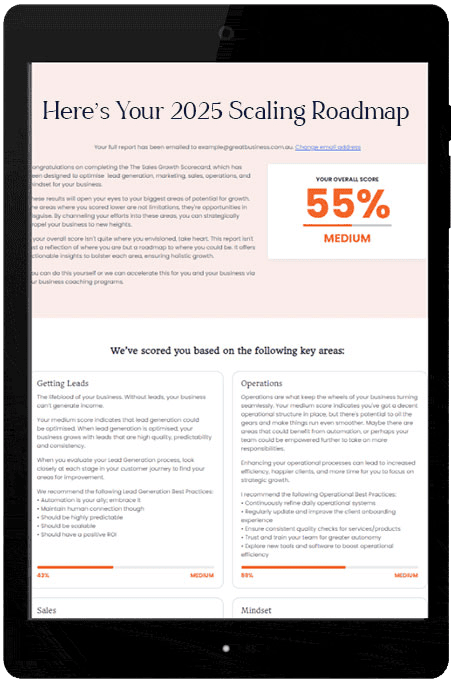Social entrepreneurship has been talked about so much over the last few years and many businesses are applying these to their businesses today. So, on this episode of the B&LC Podcast, I’ve invited Adam Force of Change Creator to help us understand social entrepreneurship and the idea behind it. He’s going to talk about its benefits and give some tips you can do to start incorporating this into your business.
Important Links Mentioned in the Show:
Women in Business Retreat 2020
Angela Henderson Active Business Facebook Group
Angela Henderson Facebook Business Page
Prefer to read Social Entrepreneurship – Making an Impact Through Business? Here’s the transcript:
ANGELA:
You’re listening to the Business and Life Conversations Podcast with Angela Henderson, Episode 82.
Hey there, you’re listening to the Business and Life Conversations Podcast. My name is Angela Henderson and on this show, we talk about improving your business, life or both, by having amazing and rich conversations with brilliant guests who will inspire you and who will give you tips and tricks to help you grow both in life and in business.
Well, hey there and welcome back to another awesome episode of the Business and Life Conversations Podcast. I am your host, Anj, from Angela Henderson Consulting where I am a Business Consultant and Coach who has helped hundreds of women business owners get all the pieces in place in order for them to have consistent five-figure months and then on to six-figure years without burning out in the process.
Social entrepreneurship is a bit of a buzzword over the last few years and something I’ve been super interested in learning more. And that’s why I brought on Adam Force from Change Creator who’s going to chat with us today really about allowing us to understand a little bit more about what is exactly social entrepreneurship, what are the key benefits of incorporating this into your business, what businesses are currently doing social entrepreneurship well? And we’re also going to dive deep about some tips on what you can do to start bringing social entrepreneurship into your own business today.
But before we jump into this episode, I just want to let you know that this episode is sponsored by my 12-month group coaching program, Profit Pillars with Angela Henderson. My 12-month group coaching program has been designed specifically for women business owners who are ready to take action to grow a sustainable and profitable business.
The program includes a complete Profit Pillar Training System, which includes my PDFs, guides, videos, etc. We also have our live strategy sessions every month, our monthly hot seat calls, our monthly masterminds with guest experts, we have 24/7 access to a private and very inclusive VIP Facebook community, we have world-class member support, and we also have a variety of other specials and bonuses and secret surprises along the way.
To learn more about my 12-month group coaching program, you can head to angelahenderson.com.au. Now get ready as we jump into this amazing episode talking about all things social entrepreneurship. And remember if you love this episode, I would equally love for you to share it on Instagram stories and tag me @angelahendersonconsulting so I can be sure to share it. Welcome to the show, Adam.
ADAM:
Hey, thanks for having me. I appreciate it.
ANGELA:
It is awesome. Now, I know it’s getting to be extremely light where you are. And so, you’re over in Florida, is that correct?
ADAM:
I’m hanging out in Miami, the weather is warm. But, yeah, it’s getting near…
ANGELA:
It’s going to light, because, at time of recording, it’s 10:00 in the morning Australian time, around 8:00 something your time.
ADAM:
Nice. Nice.
ANGELA:
So again, thank you so much. I appreciate you being on the show. Now, you and I, we’ve only just recently met through our mastermind group that we’re in, and we’ve done a podcast, I’ll be on yours, you’re on mine, and here we are. So again, the beauty of relationships; you just never know who you’re going to meet and who’s around the corner. So again, I really appreciate that this friendship of ours is starting to blossom.
ADAM:
Yeah. Absolutely. That mastermind’s been amazing. I’m glad we had a chance to connect. So, yeah, excited to be here and talk more about business and all things entrepreneurship.
ANGELA:
So, yes. Well, today we’re going to talk specifically about social entrepreneurship. But before we get into that, I like my listeners to know a little bit about you, not just the kind of the business side of things. So after learning about you and the impact that you really want to make on the world and the love you have for ensuring, I guess that the world is protected in so many other ways, clearly, there’s so many pieces about the world that you love. And so, I’d love to know a special spot that either you or your partner have travelled to and what was so magical about it?
ADAM:
Yeah. I mean, I think we all need to get away once in a while, right? So we were actually living in Philadelphia for about six years and I started a job in New York before that. So I still had that job when in Philadelphia, so I was travelling every day back and forth; Philly to New York. And that was 4 hours of travel every day and my wife was in the medical industry and she had a chaotic schedule. So, you know, I get back 7:00 P.M., go to gym, have something to eat. Long story short, I mean, you start getting tired.
ANGELA:
Yes.
ADAM:
It’s a fast pace; we’re living a city life and you get burnt out a little bit. So we just kind of got fed up, and we’re like, “Let’s get out to someplace remote.” And we decided to go out to Costa Rica, which was a great decision. It was life-changing, right?
So, we get out there and it was the middle of nowhere and you kind of feel like you’re just in another planet in a sense; the smells, the way you just feel so disconnected from where you came from. So that was special in and of itself and it just get those wheels like turning and you start thinking about things.
And the big question that came up to me at that time was just, “God, what am I doing right now?” I’m like, “Back there in the States, I’m doing all the stuff for work.” And I started wondering like, “God, is that what I want to do ten years from now?” Am I just like getting stuck in this pattern?” And I was like, “Man. I got to actually really change something.” I was so interested and I was doing things on the side that were more around my activist spirit and I was like, “This is the stuff that’s really important to me.”
And I’m running around there doing all these other things. And I’m like, “I got to change gears. I got to change that trajectory.” So from that point on, that became a special moment for me because it switched my gears and my brain and my perspective. And my whole top of my arm and my back are covered in tattoos for Costa Rica now.
ANGELA:
Yeah, so you have a very soft spot for Costa Rica?
ADAM:
Big time.
ANGELA:
Yup. And with that, obviously, so you went to Costa Rica, you have this kind of, “Okay. Shit’s got to change. Who knows where we’re going to end up? We’re just kind of in the rat race.” Then what happened? How did you go from corporate, was it a slow transition or fast transition? Like, what did that look like for you?
ADAM:
Slow. And I think a lot of people have to realize that there is no, “We’ll flip the switch quick.” Like, “I’m just going to quit and go do something else.” It was, “Okay. I got to catch a train at 7:23 in the morning,” which means, how do I start a business and I didn’t know what business to start. So it was, I got to wake up at 4:00 a.m. and I have to do work for a couple hours and just start figuring things out.
The good thing was the wheels were in motion. Once the wheels were in motion, you’re always looking for what you want to do and you’ll get there. So to me, setting that stage, doing the work and just getting involved to it. So I tried all kinds of things. I started I think three different like startup business ideas. I volunteered for groups to get my feet wet and see if I like things. I did some consulting work for different types of things and I just started trying things and figuring out how do I come to a conclusion, like what my path is. And when you have a big list, you don’t know what direction to go, sometimes you just got to start trying things and crossing off the list.
ANGELA:
And I think that’s great what you did is you took action. So many people just sit there and don’t take any action and they’re still no closer to figuring out that piece of the puzzle that they’re longing for. So the fact that you took action obviously moved you in that pathway a lot quicker. Another thing, Adam, that I just want to touch that you bring upon is so many people say, “Quit your 9:00 to 5:00. Just quit, you’re going to be fine. You’re going to do this, you’re going to do that.”
But I’m a really big believer; like I still worked in my regular mental health job as a Mental Health Clinician. So I would wake up with the kids, I’d do the hour of commute, and I did a lot like listening to podcasts and stuff during my time or phone calls. I actually think in some ways, I was actually more productive when I still had my 9:00 to 5:00 because I only knew I had a short window of opportunity to make the business work.
ADAM:
Yeah.
ANGELA:
And I still, I don’t think, there’s a lot of people talk about that it’s okay to still be in your 9:00 to 5:00 while you start your business. Or if you do jump ship and just go straight into your business, that sometimes, you may have to give yourself permission to go back and get a 10 to 20 hour a week job just to help keep the family business or keep the business afloat, but equally your family bills paid, etc.
And there seems to be a lot about, “Oh, that’s a failure. I failed because I have to go back to work.” But I’m like, “Actually, no. It’s just a stepping stone to get you to where you need to go next.” What are your thoughts about that?
ADAM:
I’ve been there. 100%. And I think that the realization people have to have is that you’re going to have to straddle two worlds for a while, there is no easy answer. You don’t just quit unless you have something that you see working. If you don’t see something working, you’re taking a risk that’s not worth it. So it’s like, take your time, like figure things out, straddle two worlds for a little bit.
But then, it’s kind of like, my wife said to me once, she’s like, “It’s kind of like the movie, American Beauty. Remember when he worked at McDonald’s, and it’s like, he just didn’t care because it’s just was just a thing he was doing.” That’s how you can feel about that job; it’s your funding strategy. So maybe you’re not going out to an investor and taking a year to figure that out so you can fund yourself; keep your equity. That means straddling two worlds, and then getting the other thing working while you do it.
ANGELA:
Exactly right. I like that, it’s your funding strategy. Now, so you obviously end up; you finished up corporate, you’ve tested a few things. So now, where are you today? What does your world look like today in business?
ADAM:
So Change Creator has actually had a lot of evolution. We started out as a digital magazine and a podcast ourselves, and we had a blog and we kind of started a little too much of a complicated business, but we are focused on social entrepreneurship. And there was no magazines, no literature, no information about what does social entrepreneurship thing was, especially how to execute. Like, what is, how do you pursue that vision and succeed at it?
So back then, it wasn’t in universities, like it is now. There’s been a rapid increase just in recent years, which demonstrates how popular it’s becoming. But I created the first magazine for social entrepreneurship and I built that up, and this was so that we can give easy access to entrepreneurs who are looking to take this approach to business, which is to do social and environmental good and use business as a tool to do that.
But I really try to sync up people’s thinking on the business and the life. There is no business in life; it’s just, you’re just creating the life that you want to live and it aligns to your values, right? So now, you’re doing something that you can wake up excited about. And that’s what Change Creator was all about, we want to create change creators. This is the kind of person that we want to appeal to.
And so, we moved on and we were able to get like Arianna Huffington, Richard Branson, Tony Robbins, all these guys on the magazine. We’ve built up our brand equity, and then, we took it a step further and we started building an educational program to support somebody’s social entrepreneurship and gaps that we saw where they were struggling. And that is the Captivate Method that we have today, so on and so forth. And so, this is how it’s been unfolding over the years as we get really focused into more of this educational side.
ANGELA:
Dude, well, it’s quite a journey, but I guess, it’s also lead you to probably figuring things out a little bit more, your entire and your own systems. But I also suspect that through this journey that you’ve now been able to really hone in on even more so about that world of social entrepreneurship and how you can start to incorporate that into people’s businesses.
Now there will be; a lot of my listeners are just kind of starting out in their business journey. Not all; but there’s still some. I’m very mindful that my audience is quite different in various ways. But I’m also quite mindful that we can use jargon in the worlds that we do and just take it for granted that we know exactly what someone is talking about.
So can you just kind of again briefly define, I know you touched upon it, but just to kind of give everyone a baseline. Because I do think that there’s a difference between social entrepreneurship and then social enterprise. And I just want to make sure that we’re all on the same page. So can you just kind of define what social entrepreneurship means to you because that’s kind of going to stem us forward for the rest of the podcast.
ADAM:
Yeah. I mean, so I’ll start off by saying there has been attempts to create a standard definition and that was by the School Foundation. They have a huge yearly event where they have all these award-winning social entrepreneurs; these are some of the people we’ve interviewed and talked to. And so, they had to define it somehow.
And so, they did that and they kind of like set the stage. And their technical definition is you know, somebody that uses business to do social and environmental good and shift the equilibrium of a system. So really getting at systemic change, right? The root cause of bigger cultural issues and system problems. And I totally get like why they did that, but I’m not a fan of just having that set definition. It’s like asking somebody to talk about a key topic and you probably get ten different answers.
ANGELA:
Totally, yeah.
ADAM:
So to me, I always said, I don’t care about the academic approach and all that kind of stuff. To me, where I see business going is to be heart-led and aligned to human values, meaning, I’m going to look at my business from head to toe and make sure that I’m not colluding, that I’m not creating problems, that I’m not shortchanging people. You’re ethical; you’re just thinking through it consciously, and you’re kind of aligning that business to your values because now that becomes your Northstar for decision-making.
ANGELA:
Right.
ADAM:
Because if you have that mission and this is what is threaded throughout the company, now everyone’s going to be thinking in that direction. It’s good, head to toe, not just for the company. It’s good for all the people, it’s good for the planet and all that kind of stuff, right?
ANGELA:
And I guess it would also go like again, if you’re bringing on your hiring staff, for example, to come into your business. And if you already have that defined about what that looks like from head to toe, they’re going to need to be aligned with that or they’re probably not going to be the right fit for your business. So I guess if you’re able to map that out early on, there’s probably tons of benefits.
Which kind of goes into my next question, in your experience and of those people that you’ve interviewed and also your own business is, what are some of the key benefits that you’ve seen by incorporating the social entrepreneurship mindset into your overall business strategy?
ADAM:
Yeah. I mean, people are more motivated when you bring on a team because they have a sense of purpose. And so, when you really do distil what you stand for, and it is a cause that people believe in already; it aligns to their world view, they want to get behind it, they want to support it. They’re not just there for a paycheck anymore. So that’s a really positive work environment, right?
ANGELA:
Yes.
ADAM:
We also wake up every day excited about what you’re doing, which means the work you’re doing will be sustainable. It becomes your lifestyle and it’s not something that you get burnt out because I don’t think burnout is from overworking. I think it’s more from doing things that don’t mean anything to you. So over time, it’s just so; you’re so discontent, right? So you burn out. So I think that’s another big value of this type of work.
And then, of course, there’s the value of doing good for people. It’s kind of like giving back. You know, ultimately, what I would like to see is not that you have to be a conscious shopper, but that you just go and shop and it’s expected that these companies are doing things the right way, right? They’re not shortchanging the environment and people.
ANGELA:
Well, dude, exactly. And let’s be honest, there are lots of people who probably start businesses, and because they haven’t even thought about the social entrepreneurship side of things, they’re doing it. And then, maybe they have to go and clean things up later on, right? In your two, or your three or even your four/five; because they’re like, “Oh, shit. Actually, I did this really badly.”
And I believe that similar today is mistakes are all lessons that we need to move forward, right? So I don’t think there’s anything ever perfect, but it would be good to understand what businesses do you currently see or have seen that throughout the years that are really doing social entrepreneurship well?
ADAM:
I think a business that everyone might know, just to make it easy and they’re a little bit bigger is like Patagonia.
ANGELA:
Okay, yup.
ADAM:
Right? This is completely; look at their mission statement or in their stores, it’s everywhere. You can look at the tag of a shirt and it’s going to talk about the fishing environment and how it’s helping that. And they’re going to have all these events and things going on; programs that they support that are doing good things. They literally tell people to buy less of their product and not be wasteful; so they focus on quality. They’re really into everything and it’s; they live the story.
That’s a very important part of this type of entrepreneurship is to live the story because there’s too many people out there that are green washing. They see that people are interested and they want this organic and they want sustainable and they want to buy these things. So companies like to put on a front for marketing.
ANGELA:
Totally.
ADAM:
And then, they don’t have the proof behind it. They’re not actually living the story. And so, you get; now you’re going to create these major red flags with customers. So you want to really live your story. And I think Patagonia is a good example. Then, of course, there’s a million small companies like Brave Souls, Ethnotek Bags. I mean, they are all doing something very special and they all live their story and are now seeing the benefits of their efforts.
ANGELA:
Fantastic. And why do you think; do you think Patagonia and those other businesses that you’ve said have always thought this way? Or was it an evolution?
ADAM:
For those guys, I think, I know that Brave Souls, Ethnotek Bags, they started with this intention out of the gate.
ANGELA:
Cool. Yup.
ADAM:
Their stories are ingrained. Just like Toms; he went to Argentina, saw the kids without shoes, had this idea to do the “one for one” model to give shoes to kids. So their ideas were actually from experiences, like travel experiences. Just like Blake’s that inspired the entrepreneurship solution that they made.
But you look at Patagonia, this guy, Yvon, I forget how to pronounce his last name; Chouinard; he was a rock climber back in, I guess the 70s, maybe; I can’t remember the year. But he was really into the outdoors’ stuff and he became somebody that started this company and he’s doing it right. So it was kind of ingrained in his love for the environment, so it’s part of who he was.
And I think that’s not to say other companies haven’t shifted gears; I think they have. But some of them are doing, like, they’re not actually living the story. They’re just saying, “Hey. 10% of my profits are going to go to charity. But by the way, I’m an oil company that’s putting the [Crosstalk 00:18:04].
ANGELA:
“But side note, there’s this other little agenda I have on the side.”
ADAM:
Yeah. Right.
ANGELA:
And living their truth isn’t party. Do you think like social entrepreneurs, from a point of view, like, are there businesses; do you think that there’s a lot of businesses who are doing that kind of, that they’re saying that 10% of them, they’re off doing something shitty. Like do you think that’s…
ADAM:
Yes.
ANGELA:
And do you think like over time, like you said, even though they’re not living their own story, but over time, their story will unfold for the rest of the public; because people will start to see like you said, those red flags and those cracks.
ADAM:
Yeah. I think it happens all the time. I’ve literally had somebody; I won’t name names, who helps agencies and they had like an agency come to him saying; oh, actually, was supporting a major company, and I call the company out, Johnson & Johnson. And they’re like, “How do we get the benefits of this social conscious movement, but we don’t actually have to do any of that stuff?”
ANGELA:
Oh my.
ADAM:
Literally, they asked for that kind of support. I was like, “Wow, that’s crazy.”
ANGELA:
Yeah, I know.
ADAM:
So I think this happens all the time and a lot of companies, you’ll have a lot of people say, “Look at all the fossil fuel industry.” And wow, they put so much money into all these other causes, and I’m always like, “That’s great.” But one, what percentage of their annual earnings is that actually?
ANGELA:
100%.
ADAM:
And what else are they doing? Like, they haven’t re-thought their model to do something better. So they’re not living a story of doing good. They’re still continuing to deteriorate the world that we need to live in.
ANGELA:
Right. I mean, yeah, because we keep destroying it, as we all know. I mean, you look at everything that goes on around us. Our summers are getting hotter, our winters are getting colder; they’re coming sooner. There’s that whole; I mean, that’s a whole another podcast, we could talk about that for a year.
Do you think, Adam, though, that there are businesses out there that can’t incorporate social entrepreneurship? Or do you think, genuinely, if people genuinely want to make a difference in the world that we live in and make it better that anyone can incorporate it?
ADAM:
I think anyone can if they want to. So it depends how you see the world and what’s important to you. Because you can look at a company that creates like plastic, and I thought about this before, and I was like, “Yeah. Maybe there are companies that can’t. And well, the solution there might be, “Yeah. Some people will have to take more extreme measures than others.”
ANGELA:
Sure.
ADAM:
Meaning, they have to look at their business model from head to toe; what does it do for business, what does it do for people, what does it do for the planet? Like, how is it; that whole circular kind of flow? And they have to decide, “Well, can I find a replacement for plastic and kind of manufacture something different that’s biodegradable?” That would be how they can change and start living that other kind of story.
But if they do, and most, you know, they never will; I highly doubt it because it would cost a fortune. So the money is far more important; otherwise, they go out of business. So what do you do? They’re just going to continue doing what they’re doing.
ANGELA:
Do what they do because that’s where the profitability…
ADAM:
That’s profit. I mean, this is the culture; this is what we’ve, over the years, it’s been profit first, profit first. Wasn’t it illegal for like a long time to not put profit and shareholders first? I mean, that was like a law.
ANGELA:
It was like, legit, it was not something; it was non-negotiable.
ADAM:
Yes.
ANGELA:
And then, the world changed.
ADAM:
It’s crazy.
ANGELA:
So I guess, for those listeners out there, because again, a lot of mine are still on that infancy stage; that start-up phase and they might be sitting there going, “Oh, shit. I didn’t actually think about social entrepreneurship and how this could be potentially weaved and integrated into my business strategy.” What would you suggest business owners do to start incorporating, whether or not they’re on start-up or they’ve been doing this for a long time?
Like, for example, I talk a lot about mental health. I don’t, again, it’s something that we’ve been looking at. We’ve only been doing this side of things for two years and looking about how we can start giving back, but I’m still an advocate because I think there’s different ways that you can also incorporate social entrepreneurship that isn’t necessarily financial. I’d love to know what your kind of thoughts are about that.
So I guess it’s two kinds of questions. One is what could businesses start doing to integrate social entrepreneurship into their own business? And two, could you do things that aren’t necessarily a financial gesture?
ADAM:
Yeah. I think you can. I mean, and I’ve been asked this question quite a few times and I used to try to really detail my answer.
ANGELA:
Yeah.
ADAM:
But I got to be honest. I mean, it’s not something that I can just say, “Well, you can do this, this or this,” because you really have to look at your business, but even more, you got to look at yourself and say, “What’s important to me and what is my business doing right now? And where are there parts in my business that I need to look at more closely and maybe fix?”
Because let’s just say you’re a fashion startup. Well, where is the clothing and fabric and stuff coming from? It is zero waste or is it fair trade? Like, how is it impacting the people that make the clothing? How is it impacting the environment, like based on the production style of how that’s being created and manufactured? So you have to look at your whole business line and see like where there’s problems or not.
And then, try to start evolving those things. And so, every business is different. And that’s where it’s not just about, “Let me give 10%. Let me do whatever.” It’s about the impact that you’re actually having so that people can buy your product and know that they’re not causing any harm. They’re not; the more consumption of this product is not going to hurt anything. You know?
ANGELA:
Yup.
ADAM:
So then, of course, there’s other things you can do, like the “one for one” model and things like that and you can try to offer something based on what you have. Like, those could be difficult models as well. There was somebody, just as an example, I talked to, who has an eyeglass company. And instead of doing what Warby Parker does, which is a “one for one,” they decided that for every number of sunglasses or eyeglasses sold, they help someone in India get a very specific eye surgery.
ANGELA:
Oh, that’s cool.
ADAM:
Yeah. So there’s models like that, too, right? So I think the first thing is look at your business, see where you might have problematic areas and what you could do better. And then, you can always work on that over time. It doesn’t have to be like this immediate, expensive thing. But you look at that more closely, see how others are doing it, whatever it might be.
And then, you can look at your model and say, “Well, is there something that’s important to me that I want to support with this that makes sense with the business?” Just like the eyeglasses or Toms does. And people get creative. Here’s the thing; there are no hard rules and you’re seeing new ideas like the eyeglasses for surgery, they’re coming up all the time.
ANGELA:
Yeah.
ADAM:
And so, it’s just a matter of you thinking about what’s important, looking at the business, and then, coming up with ideas and getting creative.
And like you’ve been talking about early on, taking action and just testing. You might have something, that doesn’t mean that it can’t evolve over time or it can’t pivot or change, but just starting somewhere. I think you touched briefly about it is that when you’re looking at social entrepreneurship, you also have to look at yourself. Like, you can’t just do it. Because really, your values are ingrained throughout your mission and everything else.
So I think, too, it’s one of the first exercise I actually have in my clients; my one to one and my group coaching clients, too, is look at their core values because if people don’t understand what their core values are, it’s going to be really hard to weave that into content, weave that into sales pages, weave that into that social entrepreneurs; anything, right? So I think it’s super important that they go back and just look at themselves, and what does that mean, and how they can flash that out for the business.
ADAM:
100% agree. Man, that’s so important and our Captivate Method Program that I mentioned earlier, we focus on helping people apply; like they create a digital system, but they’re using, we teach storytelling for their marketing. And so, they walk away with like, we call a Sales Toolbox; all these sales stories.
And guess what? The first thing they really got to dig into is about themselves and really getting clarity on some keys things before they create the offer and all that kind of stuff and start threading it through what we call the Digital Conversation, right? And that’s just having the sales conversation across your digital network. And so, I think you’re spot on and I 100% agree.
ANGELA:
Now listen, the world is social entrepreneurship. It is such a big world out there and I appreciate you coming on today and start having these conversations because I believe conversations is where everything has to start from. And even if a handful of people take away today and start to make change, what you’ve told us today is going to help be a bigger impact throughout the world collectively. So thank you for that. Now, the listeners who’d like to connect with you, where and how can they find you?
ADAM:
Yes. Super easy; thanks for asking. Changecreator.com.
ANGELA:
Alright. Fantastic. And I do have one final question. What do you know now that do you wish you knew when you first started business?
ADAM:
I wish I knew to start a very simple business and not a complicated one.
ANGELA:
Yeah. Adam’s giggling because we were talking before; I can only assume you’re giggling a little bit because we were talking pre-recording about some of the stuff we’ve been doing at our mastermind together and some of the things that we’re testing. And we’re like, “You just got to choose a few things. Do it well and go next.” Because we both, I think, have experienced trying to overcomplicate things and have come to the conclusion that simple is better. So yes, that’s why; for those listening out there wondering why we maybe giggling. That’s why.
ADAM:
100%. You know, we make videos and like have this talk and points, and we say these things. I’m like, “Man, I hope people take me seriously,” like, seriously, listen to what I’m saying. I’m going to help you avoid a world of pain.
ANGELA:
Exactly. You do not want to go down this. Like, we’ve already learned this lesson. But other people will still need; like there’s a few clients, too, when I do some consulting, I’ll give them a suggestion. But you’ve almost kind of like, we’re also talking about planting the seeds today when you grow a garden. Sometimes you got to plant the seed, you’ve got to let them water it and then, they’ve got to pick things out and they’ve got to learn themselves, right? So sometimes, we’re just like, we’ve planted the seed and they’ll blossom the way it needs to bloom for themselves. So, yes.
ADAM:
It’s all about timing, right? Timing, like, it’s just like, it depends where they are and their world view. Like, it may resonate, or they’ll hear it and say, “Yeah. I get what you’re saying.” But then, they’ll hear it again from me little differently like six months later and they have a different perspective and they’re like, “Oh, now I really get it.”
ANGELA:
And go, “Aha! I’ve got it now.”
ADAM:
Yeah.
ANGELA:
And for those of you, before we sign off, just a reminder that my team and I will also be putting through the transcription for this episode at angelahenderson.com.au. And of course, I cover all sorts of related business goodness at my website, too, which is angelahenderson.com.au. So be sure and head over there to check with the podcast, blogs, and everything in between.
And for the rest of you, I hope you have a fabulous day, and for you Adam at night over in America. And I look forward to having you join me next week for another amazing episode of the Business and Life Conversations Podcast. Thanks again, Adam. I really appreciate you coming on today.
ADAM:
Awesome. I had fun. Thank you.
ANGELA:
Have a great night.
Thanks for listening to the Business and Life Conversations Podcast with Angela Henderson, Social Entrepreneurship. www.angelahenderson.com.au
